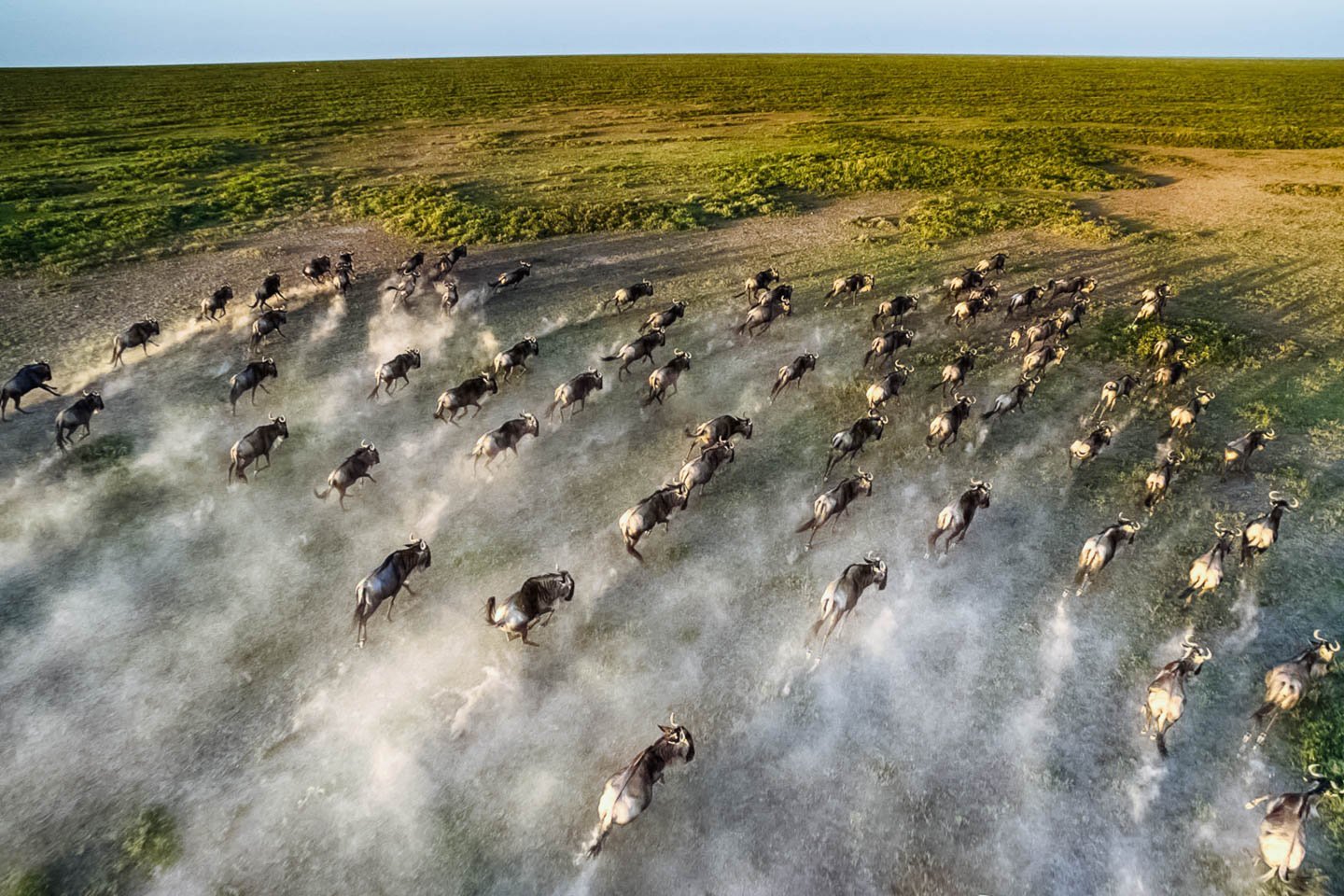The Serengeti is one of the most famous and breathtaking regions in Africa, known for its stunning landscapes, incredible wildlife, and the annual migration of millions of animals. This vast ecosystem is a treasure trove of natural beauty and biodiversity, attracting visitors from all over the world. But where exactly is the Serengeti, and what makes it such a special place?
1. Geographic Location of the Serengeti
The Serengeti is located in East Africa, straddling the northern part of Tanzania and extending into southwestern Kenya. The region is part of the larger Serengeti ecosystem, which covers an area of approximately 30,000 square kilometers (12,000 square miles). The core of the ecosystem is the Serengeti National Park in Tanzania, which was established in 1951 and is a UNESCO World Heritage Site.
1.1. Latitude and Longitude
The Serengeti is situated between latitudes 1° to 3° South and longitudes 34° to 36° East. The region’s elevation varies from 920 to 1,850 meters (3,020 to 6,070 feet) above sea level, contributing to its diverse climate and habitats.
1.2. Neighboring Regions and Parks
To the west of the Serengeti lies the Ikorongo and Grumeti Game Reserves, while the Ngorongoro Conservation Area and the Maasai Mara National Reserve border it to the southeast and north, respectively. These neighboring regions are integral parts of the greater Serengeti ecosystem and play a crucial role in wildlife conservation.
2. The Physical Landscape of the Serengeti
The Serengeti’s landscape is incredibly varied, featuring expansive grasslands, rolling hills, riverine forests, and rocky outcrops known as kopjes. This diversity of habitats supports a wide range of flora and fauna, making the Serengeti one of the most biologically diverse regions on the planet.
2.1. The Serengeti Plains
The Serengeti Plains are perhaps the most iconic part of the region, characterized by vast open grasslands that stretch as far as the eye can see. These plains are the primary stage for the Great Migration, where millions of wildebeest, zebras, and gazelles move in search of fresh grazing grounds.
2.2. The Western Corridor
The Western Corridor of the Serengeti is dominated by the Grumeti River, which flows through dense woodlands and marshy areas. This part of the Serengeti is known for its large populations of crocodiles and hippos, as well as the seasonal migration of animals crossing the river.
2.3. The Northern Serengeti
The Northern Serengeti is a more rugged and hilly area, with landscapes transitioning from grasslands to woodlands. This region is less frequented by tourists, offering a more remote and exclusive safari experience. The Mara River, which runs through this area, is famous for the dramatic river crossings during the Great Migration.
2.4. The Kopjes
Kopjes are ancient granite rock formations scattered across the Serengeti. These rocky outcrops provide shelter for predators like lions and leopards and serve as vantage points for spotting prey. The kopjes also support unique plant species adapted to the harsh conditions of the rocks.

3. The Climate of the Serengeti
The Serengeti experiences a tropical savanna climate, with distinct wet and dry seasons. The climate plays a crucial role in the migration patterns of wildlife and the overall ecosystem dynamics.
3.1. Wet and Dry Seasons
The wet season typically runs from November to May, with short rains occurring in November and December and long rains from March to May. During this time, the plains are lush and green, providing abundant food for herbivores. The dry season, from June to October, sees a reduction in rainfall, and the landscape becomes more arid, prompting animals to migrate in search of water and fresh grazing.
3.2. Temperature Variations
Temperatures in the Serengeti are relatively consistent throughout the year, ranging from 15°C (59°F) at night to 30°C (86°F) during the day. However, temperatures can drop significantly in the higher-altitude areas, particularly at night.
4. The Wildlife of the Serengeti
The Serengeti is home to an extraordinary diversity of wildlife, including some of the most iconic species in Africa. It is renowned for the “Big Five” – lions, elephants, buffalo, leopards, and rhinoceroses – as well as countless other mammals, birds, reptiles, and insects.
4.1. The Great Migration
The Great Migration is one of the most spectacular wildlife events on the planet. Every year, over 1.5 million wildebeest, 200,000 zebras, and 300,000 gazelles migrate in a circular pattern across the Serengeti and Maasai Mara in search of fresh grazing lands. This migration is driven by the seasonal rains and the availability of water and grass.
4.2. Predators of the Serengeti
The Serengeti is a haven for predators, with large populations of lions, cheetahs, leopards, and hyenas. These carnivores follow the migrating herds, preying on the weak and vulnerable members. The interaction between predators and prey is a key aspect of the Serengeti’s ecological balance.
4.3. Birdlife in the Serengeti
The Serengeti is also a birdwatcher’s paradise, with over 500 species recorded in the region. From large raptors like vultures and eagles to colorful birds like the lilac-breasted roller and the grey-crowned crane, the Serengeti’s avian diversity is remarkable.
5. The Human Connection to the Serengeti
The Serengeti is not only a natural wonder but also a region with a rich cultural history. The Maasai people, who have lived in harmony with the land and its wildlife for centuries, are an integral part of the Serengeti’s identity.
5.1. The Maasai People
The Maasai are semi-nomadic pastoralists who inhabit the Serengeti and surrounding areas. They are known for their distinctive red clothing, beadwork, and strong cultural traditions. The Maasai have a deep connection to the land, and their presence in the Serengeti is a testament to the possibility of coexistence between humans and wildlife.
5.2. Conservation and Tourism
The Serengeti is a global symbol of wildlife conservation. The region faces numerous challenges, including poaching, human-wildlife conflict, and habitat loss. However, conservation efforts by the Tanzanian government, NGOs, and local communities have helped protect the Serengeti’s biodiversity. Tourism plays a vital role in funding these conservation efforts, with thousands of visitors flocking to the Serengeti each year to experience its wonders.
5.3. The Role of the Serengeti in African Culture and Heritage
The Serengeti has also been a source of inspiration for African culture, literature, and art. The region’s landscapes and wildlife are often depicted in African folklore, paintings, and music, symbolizing the beauty and power of nature.
6. How to Visit the Serengeti
For those inspired to explore the Serengeti, planning a visit involves understanding the best times to go, the available accommodations, and the different types of safari experiences.
6.1. Best Time to Visit
The best time to visit the Serengeti depends on what you want to see. The Great Migration is a year-round event, but the most dramatic moments, such as the river crossings, typically occur between July and September. The calving season, where thousands of wildebeest are born, takes place from January to March.
6.2. Safari Options
There are various safari options in the Serengeti, ranging from luxury lodges and tented camps to budget-friendly camping safaris. Each offers a unique way to experience the Serengeti’s wildlife and landscapes.
6.3. Getting to the Serengeti
The Serengeti is accessible by both road and air. Most visitors fly into Kilimanjaro International Airport or Arusha, from where they can take a domestic flight to one of the airstrips in the Serengeti or embark on a road journey through the stunning Tanzanian countryside.
7. The Global Significance of the Serengeti
The Serengeti is more than just a national park; it is a symbol of the natural world’s resilience and the importance of preserving our planet’s wild places.
7.1. World Heritage Site
In 1981, the Serengeti was designated a UNESCO World Heritage Site in recognition of its outstanding universal value. The park’s conservation success story has made it a model for other protected areas around the world.
7.2. Research and Scientific Importance
The Serengeti has been the focus of extensive scientific research, particularly in the fields of ecology, biology, and conservation. Studies conducted in the Serengeti have provided valuable insights into animal behavior, migration patterns, and ecosystem dynamics, contributing to our understanding of the natural world.
7.3. Challenges and Future Prospects
Despite its protected status, the Serengeti faces ongoing challenges, including climate change, poaching, and human encroachment. Conservationists continue to work towards finding sustainable solutions that balance the needs of wildlife, local communities, and the environment.
Conclusion
The Serengeti is a place of unparalleled natural beauty and ecological importance. Its vast landscapes, rich wildlife, and cultural heritage make it one of the world’s most extraordinary destinations. The Serengeti’s significance goes beyond its borders; it serves as a vital reminder of the importance of preserving our planet’s natural heritage for future generations. Whether you’re drawn to the dramatic scenes of the Great Migration, the chance to witness the Big Five in their natural habitat, or the opportunity to connect with the Maasai culture, the Serengeti offers an experience like no other.
As we continue to face global environmental challenges, the Serengeti stands as a beacon of hope and a testament to what can be achieved through dedicated conservation efforts. Visiting the Serengeti is not just a journey through one of Africa’s most iconic landscapes, but also a journey into the heart of nature itself – a place where the wild still reigns, and the wonders of the natural world are on full display.
In the end, the Serengeti is more than just a location on a map; it is a living, breathing ecosystem that captures the essence of Africa’s wild beauty. Its preservation is essential, not only for the wildlife that call it home but for the entire world, as it symbolizes the enduring connection between nature and humanity.

